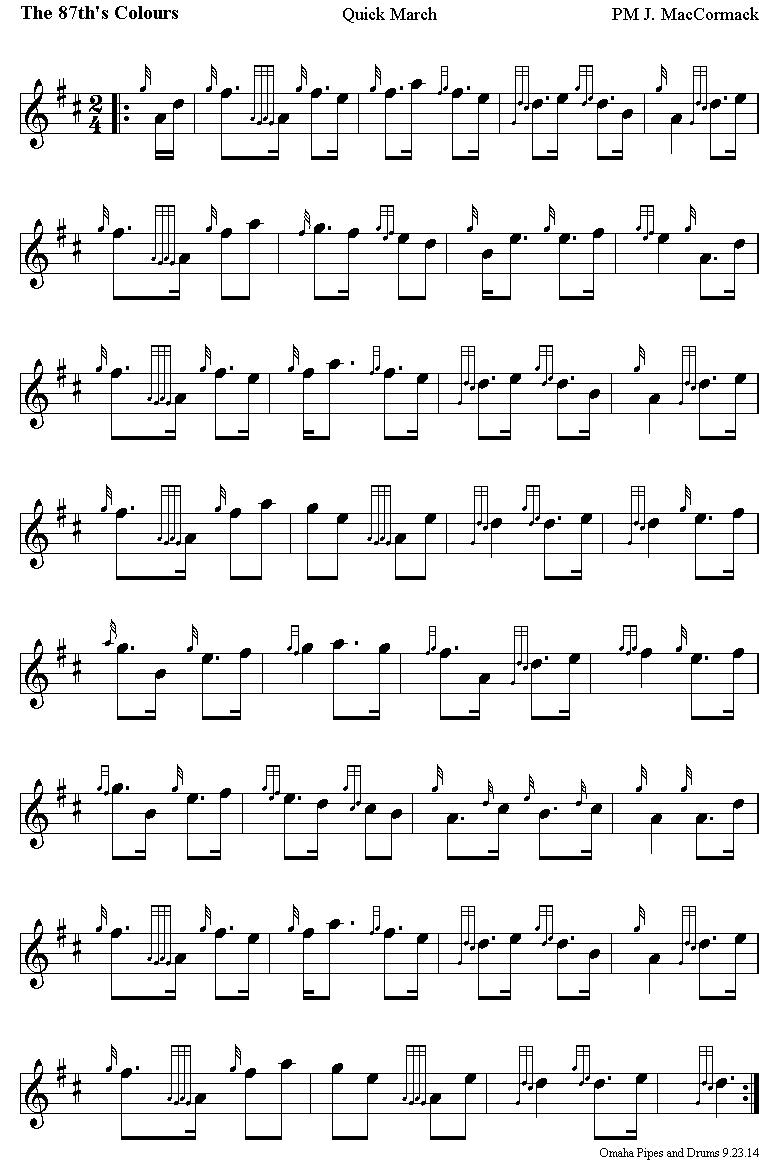The 87th (Royal Irish Fusiliers) Regiment of Foot was an infantry regiment of the British Army, formed in 1793 and amalgamated into the Princess Victoria's (Royal Irish Fusiliers) in 1881. The regiment was raised in 1793 as the 87th (The Prince of Wales's Irish) Regiment of Foot, taking its title from George IV, then Prince of Wales, later modifying its title to 87th (The Prince of Wales's Own Irish) Regiment of Foot, then to 87th (Royal Irish Fusiliers) Regiment of Foot following the Prince's accession to the throne.
The 87th were famous for being the first British Regiment to capture a French Imperial Eagle during the Peninsular War. At the Battle of Barrosa on 5 March 1811, Ensign Edward Keogh and Sergeant Patrick Masterson captured the Eagle of the 8th Ligne. Keogh only managed to get a hand on the shaft when he was shot and bayoneted, he was killed instantly. Masterson had followed his officer and after killing several men he wrenched the Eagle from the dying hands of its bearer, Lieutenant Gazan.
In military organizations, the practice of carrying colors (or colours), standards or guidons, both to act as a rallying point for troops and to mark the location of the commander, is thought to have originated in Ancient Egypt some 5,000 years ago. It was formalized in the armies of Europe in the High Middle Ages, with standards being emblazoned with the commander's coat of arms.
As armies became trained and adopted set formations, each regiment's ability to keep its formation was potentially critical. In the chaos of battle, not least due to the amount of dust and smoke on a battlefield, soldiers needed to be able to determine where their regiment was. Regimental flags are generally awarded to a regiment by a head-of-State during a ceremony. They were therefore treated with reverence as they represented the honor and traditions of the regiment. Colors may be inscribed with the names of battles or other symbols representing former achievements. Regiments tended to adopt "color guards", composed of experienced or Úlite soldiers, to protect their colors. As a result, the capture of an enemy's standard was considered as a great feat of arms. They are never capriciously destroyed - when too old to use they are replaced and then laid-up in museums, religious buildings and other places of significance to their regiment. However, in most modern armies, standing orders now call for the Colors to be intentionally destroyed if they are ever in jeopardy of being captured by the enemy.
Due to the advent of modern weapons, and subsequent changes in tactics, Colors are no longer carried into battle, but continue to be used at events of formal character.



